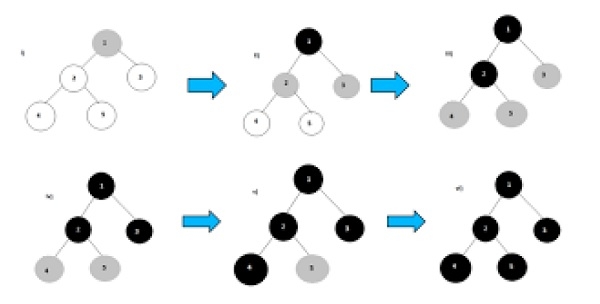
 Data Structure
Data Structure Networking
Networking RDBMS
RDBMS Operating System
Operating System Java
Java MS Excel
MS Excel iOS
iOS HTML
HTML CSS
CSS Android
Android Python
Python C Programming
C Programming C++
C++ C#
C# MongoDB
MongoDB MySQL
MySQL Javascript
Javascript PHP
PHP
- Selected Reading
- UPSC IAS Exams Notes
- Developer's Best Practices
- Questions and Answers
- Effective Resume Writing
- HR Interview Questions
- Computer Glossary
- Who is Who
BFS using STL for competitive coding in C++?
The Breadth First Search (BFS) traversal is an algorithm, which is used to visit all of the nodes of a given graph. In this traversal algorithm one node is selected and then all of the adjacent nodes are visited one by one. After completing all of the adjacent vertices, it moves further to check another vertices and checks its adjacent vertices again.

In The competitive coding, we have to solve problems very quickly. We will use the STL (Standard Library of C++) to implement this algorithm, we need to use the Queue data structure. All the adjacent vertices are added into the queue, when all adjacent vertices are completed, one item is removed from the queue and start traversing through that vertex again.
In Graph sometimes, we may get some cycles, so we will use an array to mark when a node is visited already or not.
Input : The Adjacency matrix of the graph. A B C D E F A 0 1 1 1 0 0 B 1 0 0 1 1 0 C 1 0 0 1 0 1 D 1 1 1 0 1 1 E 0 1 0 1 0 1 F 0 0 1 1 1 0 Output : BFS Traversal: B A D E C F
Algorithm
bfs(vertices, start)
Input − The list of vertices, and the start vertex.
Output − Traverse all of the nodes, if the graph is connected.
Begin define an empty queue que at first mark all nodes status as unvisited add the start vertex into the que while que is not empty, do delete item from que and set to u display the vertex u for all vertices 1 adjacent with u, do if vertices[i] is unvisited, then mark vertices[i] as temporarily visited add v into the queue mark done mark u as completely visited done End
Example
#include<iostream>
#include<queue>
#define NODE 6
using namespace std;
class node {
public:
int val;
int state; //status
};
int graph[NODE][NODE] = {
{0, 1, 1, 1, 0, 0},
{1, 0, 0, 1, 1, 0},
{1, 0, 0, 1, 0, 1},
{1, 1, 1, 0, 1, 1},
{0, 1, 0, 1, 0, 1},
{0, 0, 1, 1, 1, 0}
};
void bfs(node *vert, node s) {
node u;
int i, j;
queue<node> que;
for(i = 0; i<NODE; i++) {
vert[i].state = 0; //not visited
}
vert[s.val].state = 1;//visited
que.push(s); //insert starting node
while(!que.empty()) {
u = que.front(); //delete from queue and print
que.pop();
cout << char(u.val+'A') << " ";
for(i = 0; i<NODE; i++) {
if(graph[i][u.val]) {
//when the node is non-visited
if(vert[i].state == 0) {
vert[i].state = 1;
que.push(vert[i]);
}
}
}
u.state = 2;//completed for node u
}
}
int main() {
node vertices[NODE];
node start;
char s;
for(int i = 0; i<NODE; i++) {
vertices[i].val = i;
}
s = 'B';//starting vertex B
start.val = s-'A';
cout << "BFS Traversal: ";
bfs(vertices, start);
cout << endl;
}
Output
BFS Traversal: B A D E C F

